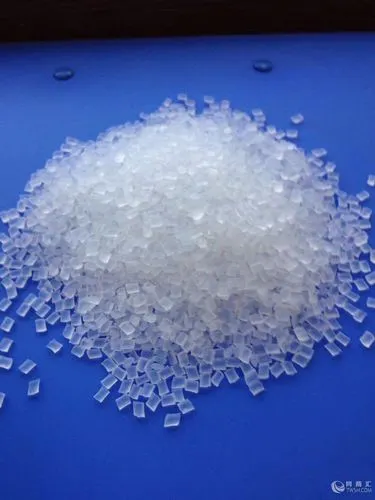Sissejuhatus
Tooraine muundamine lõngaks on keerukas protsess, mis hõlmab mitmeid etappe, millest igaüks mängib lõpptootes olulist rolli. Nendest etappidest paistab silma ketrusvaigu kasutamine, kuna see mõjutab oluliselt lõnga omadusi. See polümeerne aine, mis on hoolikalt kokku pandud looduslike ja sünteetiliste materjalide segust, aitab oluliselt kaasa lõnga tugevusele, vastupidavusele ja pehmusele. Tootjate jaoks, kelle eesmärk on toota kvaliteetset lõnga, on oluline mõista ketrusvaigu keemilise koostise nüansse ja selle mõju.
Ketrusvaigu roll lõnga tootmisel
Lõnga tugevuse suurendamine
Üks kesksetest funktsioonidest on ketramisvaik on suurendada lõnga tugevust. See saavutatakse tänu vaigu võimele moodustada kiudude vahel tugevaid sidemeid, mis vähendab purunemist ja pillingi tekkimist kasutamise ajal. Vaigu konkreetne keemiline koostis määrab selle sidumise tõhususe. Näiteks polüamiidvaigud on eriti tuntud oma suurepärase sidumisvõime poolest, mistõttu neid eelistatakse lõnga tootmisel, kus tugevus on esmatähtis.
Lõnga pehmuse ja vastupidavuse tagamine
Lisaks tugevusele mõjutab ketrusvaik oluliselt lõnga pehmust ja vastupidavust. Vaigu keemiline koostis mõjutab selle võimet absorbeerida ja jaotada pingeid ühtlaselt, mis aitab vältida selliseid probleeme nagu pilling ja nakkumine. Näiteks polüestervaigud on tuntud oma pehmuse ja vastupidavuse poolest, mille tõttu neid kasutatakse lõngatööstuses laialdaselt. See pehmuse ja vastupidavuse tasakaal on väga oluline, et toota lõnga, mis on nii mugav kui ka kauakestev.
Reaktiivsus värvainete ja viimistlusvahenditega
Ketrusvaigu keemilised omadused reguleerivad ka selle koostoimet värvide ja viimistlusvahenditega. Mõned vaigud võivad reageerida teatavate värvainete või viimistlusvahenditega, muutes lõnga värvi ja tekstuuri. Tootjad peavad seda reaktsioonivõimet hästi tundma, et tagada lõnga soovitud esteetilised ja funktsionaalsed omadused. Nende vastastikmõjude juhtimine on kriitilise tähtsusega, et toota lõnga, mis vastab täpsetele värvi- ja tekstuurispetsifikatsioonidele.
Töötlemistingimuste mõju
Selle mõju ulatub kaugemale selle keemilisest koostisest, hõlmates ka tingimusi, milles seda töödeldakse. Sellised tegurid nagu temperatuur ja rõhk ketramisprotsessi ajal võivad muuta vaigu molekulaarstruktuuri, mõjutades seeläbi selle omadusi ja seega ka lõnga omadusi. Nende töötlemisparameetrite hoolikas kontrollimine ja mõistmine on soovitud lõngakvaliteedi saavutamiseks hädavajalik.
Kokkuvõte
Ketrusvaigu keemiline koostis on lõnga kvaliteedi ja jõudluse määrava tähtsusega. Selle omadused, sealhulgas tugevus, pehmus ja reaktiivsus, mõjutavad otseselt lõnga lõppomadusi. Lisaks sellele kujundavad neid tulemusi veelgi lõnga tootmise ajal valitsevad töötlemistingimused. Tootjate jaoks, kes on pühendunud kvaliteetse lõnga loomisele, on väga oluline mõista, kuidas ketramisvaigu koostis ja töötlemine mõjutavad lõnga omadusi. Need teadmised võimaldavad toota lõnga, mis ei ole mitte ainult tugev ja vastupidav, vaid vastab ka täpselt konkreetsetele rakendusnõuetele.
Korduma kippuvad küsimused ketrusvaigu ja lõnga omaduste kohta
1. Mis on ketrusvaik?
See on teatud tüüpi polümeer, mida kasutatakse lõnga valmistamisel, et suurendada selle tugevust, vastupidavust ja pehmust. Tavaliselt valmistatakse seda looduslike ja sünteetiliste materjalide, nagu polüamiid, polüester ja polüpropüleen, kombinatsioonist.
2. Kuidas mõjutab ketramisvaik lõnga omadusi?
See mängib olulist rolli lõnga tugevuse parandamisel, moodustades kiudude vahel tugevad sidemed, vähendades seega katkemist ja pillingi teket. Samuti aitab see kaasa lõnga pehmusele ja vastupidavusele, absorbeerides ja jaotades tõhusalt pingeid.
3. Millised tegurid mõjutavad ketrusvaigu keemilist koostist?
Spinningukvaliteediga vaigu keemiline koostis mõjutab selliseid omadusi nagu sulamistemperatuur, viskoossus, reaktsioonivõime värvide ja viimistlusvahenditega ning üldine toimivus erinevates rakendustes. Erinevatel vaikudel on erinev sidumistugevus, pehmus ja reaktsioonivõime, mis mõjutab lõnga lõplikke omadusi.
4. Miks on ketrusvaigu mõistmine lõnga tootjate jaoks oluline?
Ketrusvaigu mõistmine aitab tootjatel toota kvaliteetset lõnga, mis on kohandatud konkreetsetele nõuetele. Vaigu koostise ja töötlemisparameetrite, nagu temperatuur ja rõhk, kontrollimisega saavad tootjad optimeerida lõnga omadusi, nagu tugevus, pehmus ja värvikonsistentsus.
5. Kuidas saab ketramisvaik parandada lõnga tootmise tõhusust?
Valides õige ketrusvaigu, saavad tootjad vähendada tootmisprobleeme, näiteks kiudude purunemist, ja tagada lõnga ühtlase kvaliteedi. Optimaalsete omadustega vaigud aitavad kaasa sujuvamale töötlemisele ja paremale lõpptoodangu jõudlusele.

